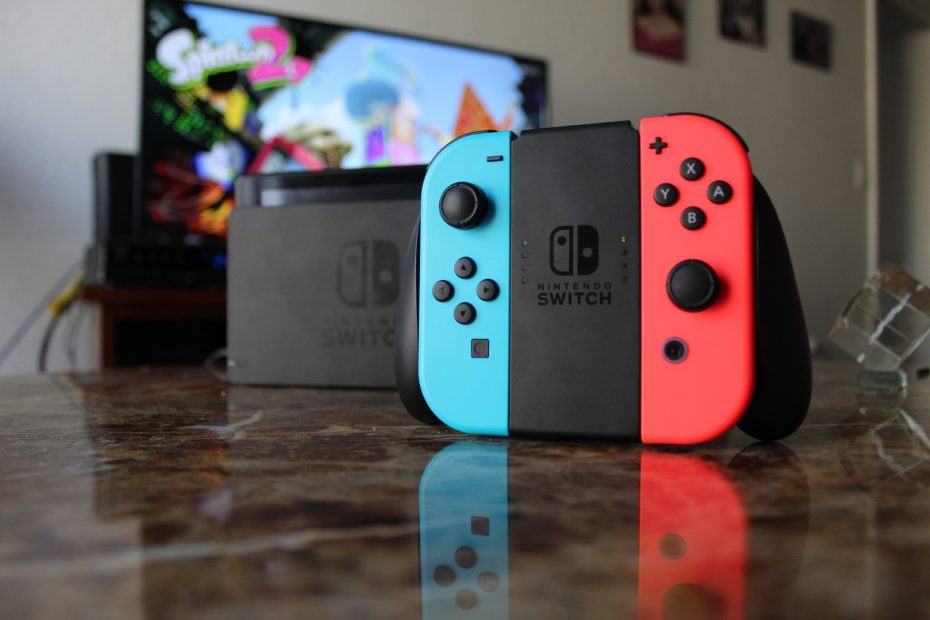Recognizing the Impact of Screen Time on Nintendo Switch: The Importance of Limits
The Nintendo Switch has become one of the most popular gaming consoles in recent years, and with its portability and wide range of games, it’s easy to see why. However, it is important to recognize the impact that screen time can have on children who use the console. Too much screen time can lead to physical health problems such as obesity, poor sleep habits, and even vision problems. It can also lead to mental health issues such as anxiety and depression. Therefore, it is essential for parents to set limits on their child’s screen time when using the Nintendo Switch.
Limiting screen time on the Nintendo Switch is not only beneficial for a child’s physical and mental health but also for their overall development. Setting limits encourages children to engage in other activities such as reading or playing outside which are important for developing social skills, problem-solving abilities, creativity, and more. Additionally, setting limits helps children learn how to manage their own time better so they can make healthier choices when it comes to spending time online or playing video games. By recognizing the importance of limiting screen time on the Nintendo Switch, parents can ensure that their children are getting all the benefits from this popular gaming console without any of the potential risks associated with too much screen time.
Setting up Parental Controls on Nintendo Switch: A Comprehensive Guide
Setting parental controls on the Nintendo Switch is easy and can help ensure a safe experience for your child. Parents can set game time limits, block certain apps or restrict access to online content. You can also set up the system to notify you of your child’s gaming progress.
To set up parental controls on Nintendo Switch, you must first create a parent profile. Once the profile is created, you’ll be able to set game time limits, block apps or restrict access to online content. You can also set up the system to notify you of your child’s progress in the game and inform you of new features and software updates.
Establishing Daily Play Time Limits: Promoting Healthy Gaming Habits
Establishing daily play time limits is an important part of promoting healthy gaming habits. By setting a limit on the amount of time spent playing video games, parents can help ensure that their children are not spending too much time in front of a screen and instead engaging in other activities such as physical exercise or socializing with friends. This also helps to prevent children from becoming addicted to gaming, which can lead to serious mental health issues. Additionally, limiting the amount of time spent playing video games can help children develop better self-control and discipline when it comes to managing their own time.
When establishing daily play time limits, it is important for parents to be consistent and firm about enforcing them. It is also helpful for parents to set up rewards systems for when their child follows the rules, such as allowing extra game time if they have completed all of their homework or chores. Finally, it is important for parents to monitor their child’s gaming habits and make sure that they are not spending too much time playing video games. By doing this, parents can help ensure that their child develops healthy gaming habits that will last into adulthood.
Managing Content Restrictions: Filtering Age-Inappropriate Games and Apps
Managing content restrictions is an important part of parenting in the digital age. With the proliferation of mobile devices and apps, it can be difficult to keep track of what your children are accessing online. Filtering age-inappropriate games and apps is one way to ensure that your kids are not exposed to inappropriate content. By setting up parental controls on their devices, you can block access to certain types of content or limit the amount of time they spend playing certain games or using certain apps. This will help protect them from seeing or hearing things that may be too mature for their age.
Another way to manage content restrictions is by monitoring what your children are downloading and playing on their devices. You should also talk with them about any concerns you have regarding the type of content they are viewing or engaging with online. It’s important to set clear boundaries and expectations when it comes to managing content restrictions so that your children understand why these rules exist and how they should behave while using technology. Additionally, you should stay informed about new technologies and trends in order to better understand what kind of content your children may be exposed to online.
Monitoring Play Activity: Tracking Your Child’s Nintendo Switch Usage
Monitoring Play Activity: Tracking Your Child’s Nintendo Switch Usage is a great tool for monitoring your child’s activity on the Nintendo Switch console. It allows parents to see what games their child is playing and how they are being used. You can also set time limits to make sure your child isn’t playing too much or too little. The tool also allows you to monitor the progress of games and evaluate them for safety and content.
The Monitoring Play Activity: Tracking Your Child’s Nintendo Switch Usage tool also offers the ability to create blocked game lists, meaning you can determine which games are appropriate for your child. You can also set up email or SMS notifications to stay up to date with all new games and updates. This tool will help you keep a better eye on what your child is doing on their Nintendo Switch console and help you protect them from inappropriate content or too much time spent in front of the screen.
